ANURAG MALLICK and PRIYA GANAPATHY travel down North Kerala’s historic Malabar Coast to discover ancient mosques from Kasaragod to Kodungallur
Long before Islam burst into India through the northwest frontiers, Kerala’s Malabar Coast witnessed the spread of Islam not by the sword but with a smile. The region had ancient trade ties with Arabia and when the last Chera king Cheraman Perumal witnessed the splitting of the moon, a Muslim troop enroute to Ceylon explained that it was one of the miracles of the Prophet. According to legend, Cheraman embraced Islam, divided his empire among various subsidiary rulers, made his nephew the Samuthri (Zamorin) of Calicut and set sail for Mecca. He landed at Shahr, where he changed his name to Tajuddin and eventually died at Zaphar, marked by a tomb with an inscription noting his death. But before he died, he wrote letters in Malayalam advocating the spread of Islam among his people in Kerala. Several Arab religious leaders, including Malik Ibn Dinar and Sharaf Ibn Malik, sailed to Malabar to spread the message of Islam. Cheraman’s decree, historic mercantile ties with Arabia and the religious tolerance showed by the Zamorin of Calicut, the Chera king of Mahodayapuram and other rulers helped in the spread of Islam. However, Kerala’s artisans had no idea what a mosque should look like (the Indo-Saracenic style was yet to come) and built these early mosques in the local architectural style. Spread across Kasaragod to Kodungallor, these fascinating mosques of Malabar are excellent examples of religious tolerance and Hindu-Muslim unity.
Cheraman Perumal Juma Masjid, Kodungallur
Built in 629 AD, the Cheraman Perumal mosque at Kodungallur is widely considered to be the first mosque in India. Though rebuilt and renovated over the years, which gives it a modern architectural façade, it does retain a bit of the original style in the interiors. Unlike other mosques, this one faces east, not Mecca in the west. A huge bronze lamp, a feature common in temples, continues to be kept lit inside. And in a time honoured practice, people belonging to all religions bring oil or contribute money to buy oil for the lamp on auspicious occasions. In an anteroom, there is a small mausoleum where Muslim priests light incense sticks, yet another Hindu practice not followed in other mosques. A few years back, the mosque also started Vidyarambham, the custom of initiating children into reading and writing. This is a shrine that has set a practice of intermingling religious rites over the years to come up with a unique Indian ethos. Syed Mohammed aged 85, has been doing baang (meuzzin’s call) since 73 years.
Built in 629 AD, the Cheraman Perumal mosque at Kodungallur is widely considered to be the first mosque in India. Though rebuilt and renovated over the years, which gives it a modern architectural façade, it does retain a bit of the original style in the interiors. Unlike other mosques, this one faces east, not Mecca in the west. A huge bronze lamp, a feature common in temples, continues to be kept lit inside. And in a time honoured practice, people belonging to all religions bring oil or contribute money to buy oil for the lamp on auspicious occasions. In an anteroom, there is a small mausoleum where Muslim priests light incense sticks, yet another Hindu practice not followed in other mosques. A few years back, the mosque also started Vidyarambham, the custom of initiating children into reading and writing. This is a shrine that has set a practice of intermingling religious rites over the years to come up with a unique Indian ethos. Syed Mohammed aged 85, has been doing baang (meuzzin’s call) since 73 years.
Malik Deenar Juma Masjid, Kasaragod
One of the historic mosques believed to have been established by Malik Ibn Deenar on the Kerala coast, this holy shrine is located in the Muslim quarter of Thalangara. The original mosque was a small structure with thatched roofing and a floor of marble stones brought with him from Mecca. Later, it was replaced by a bigger, more elaborate structure like the palace of a local king, replete with conical roofs and gables. The same artisans who had built the palace constructed the new edifice using doors and marble stones from the original shrine. An extension was added later. Several tombs dominate the foreground as a walkway leads up to the mosque, which contains the grave of Malik Ibn Mohammed, one of the descendants of Muslim saint Malik Ibn Deenar. Historical details about its construction are also carved on the latticed woodwork in Arabic. Owing to the sanctity of the place and a school for Islamic studies, Kasaragod has become an important center of Islam on the west coast. The town is also famous for the hand-crafted Thalangara thoppi (skull cap), a beautifully embroidered accessory of Islamic identity.
One of the historic mosques believed to have been established by Malik Ibn Deenar on the Kerala coast, this holy shrine is located in the Muslim quarter of Thalangara. The original mosque was a small structure with thatched roofing and a floor of marble stones brought with him from Mecca. Later, it was replaced by a bigger, more elaborate structure like the palace of a local king, replete with conical roofs and gables. The same artisans who had built the palace constructed the new edifice using doors and marble stones from the original shrine. An extension was added later. Several tombs dominate the foreground as a walkway leads up to the mosque, which contains the grave of Malik Ibn Mohammed, one of the descendants of Muslim saint Malik Ibn Deenar. Historical details about its construction are also carved on the latticed woodwork in Arabic. Owing to the sanctity of the place and a school for Islamic studies, Kasaragod has become an important center of Islam on the west coast. The town is also famous for the hand-crafted Thalangara thoppi (skull cap), a beautifully embroidered accessory of Islamic identity.
Khizar Juma Masjid, Kasaragod
Tucked away in a plot barely visible through the narrow gate sandwiched between the rows of shops, the Khizar Juma Masjid off Station Road is a stunning mosque resembling a double-storeyed mansion. A narrow walkway leads to a sprawling structure with a row of arched windows, conical turrets, gabled roof and a slender spire to the right, which presents a beautiful sight. Located in the heart of town, Theruvath Mosque is another notable Muslim shrine. The annual Uroos, held to commemorate the arrival of Malik Ibn Dinar, attracts pilgrims from all over India.
Tucked away in a plot barely visible through the narrow gate sandwiched between the rows of shops, the Khizar Juma Masjid off Station Road is a stunning mosque resembling a double-storeyed mansion. A narrow walkway leads to a sprawling structure with a row of arched windows, conical turrets, gabled roof and a slender spire to the right, which presents a beautiful sight. Located in the heart of town, Theruvath Mosque is another notable Muslim shrine. The annual Uroos, held to commemorate the arrival of Malik Ibn Dinar, attracts pilgrims from all over India.
Ichlangod Mosque
It is said 12 saints sailed to Kerala from the shores of Arabia to spread Islam. Hazrath Rafih Idnu Habeeb Malik Deenar came from Medina in Hejira 37 with his family and seven disciples – Umar, Haroon, Usman, Adbullah, Ali, Abdul and Rehman. They came in an ozhi (boat) up the river from the coast and settled here in a Hindu temple after the Namboodris were relocated to Kidoor. The Hazrath died at the age of 73 and later, his disciples were also laid to rest beside him. Though the mosque is believed to be 1200 years old, a newer structure was built in its place 30 years ago. The only proof of its antiquity is a brass ball with ancient Arabic inscriptions and a stepped pushkarni (temple pond). The Udayasthamana Uroos, a month-long celebration in March-April, is held once in five years. En-route you can also visit the Baba Fakir Wali Ullah Alarami mosque at Pachambla. The Uroos is held every two years and the weekly jumma(every Friday) is a big celebration with devotional songs that go on late into the night.
It is said 12 saints sailed to Kerala from the shores of Arabia to spread Islam. Hazrath Rafih Idnu Habeeb Malik Deenar came from Medina in Hejira 37 with his family and seven disciples – Umar, Haroon, Usman, Adbullah, Ali, Abdul and Rehman. They came in an ozhi (boat) up the river from the coast and settled here in a Hindu temple after the Namboodris were relocated to Kidoor. The Hazrath died at the age of 73 and later, his disciples were also laid to rest beside him. Though the mosque is believed to be 1200 years old, a newer structure was built in its place 30 years ago. The only proof of its antiquity is a brass ball with ancient Arabic inscriptions and a stepped pushkarni (temple pond). The Udayasthamana Uroos, a month-long celebration in March-April, is held once in five years. En-route you can also visit the Baba Fakir Wali Ullah Alarami mosque at Pachambla. The Uroos is held every two years and the weekly jumma(every Friday) is a big celebration with devotional songs that go on late into the night.
Kakkulangara mosque, Valapattanam
The ancient capital of the Mooshika-vansham or Kolathri Kings of Ezhimala, Valapattanam was an important trading town on the banks of the Valapattanam River. The old mosque Kakkulangara Palli was built with laterite that was excavated from nearby, creating the picturesque green pond beside it. This mosque has one of the oldest existing minarets in Kerala and has the graves of Abubakr ibn Muhammad, grandson of the first Caliph Abu Bakr As-Siddiq (573–634 CE) and his companions who settled in Valapattanam to propagate Islam. There’s also a dargah of Ahmed Jalaluddin Bukhari close by.
The ancient capital of the Mooshika-vansham or Kolathri Kings of Ezhimala, Valapattanam was an important trading town on the banks of the Valapattanam River. The old mosque Kakkulangara Palli was built with laterite that was excavated from nearby, creating the picturesque green pond beside it. This mosque has one of the oldest existing minarets in Kerala and has the graves of Abubakr ibn Muhammad, grandson of the first Caliph Abu Bakr As-Siddiq (573–634 CE) and his companions who settled in Valapattanam to propagate Islam. There’s also a dargah of Ahmed Jalaluddin Bukhari close by.
Korome Mosque, Wayanad
A 400-year-old mosque, built in traditional Kerala style, with extensive woodcarvings. Originally built by the Nair community, the mosque is seen as an excellent example of communal amity. A newer structure was built 250 years ago under the leadership of Athilan Bappan. The annual Uroos festival in April, draws thousands from all communities. Such was its importance that janazas (funeral processions) would come to Korome from as far as Varampetta. It also enshrines the dargah of Syed Shihabuddin Imbich, a Muslim saint. Located 23 km from Mananthavady, Korome lies on the Kuttiyadi route and can be reached via Tharuvana, Vellamunda and Makkiyad.
A 400-year-old mosque, built in traditional Kerala style, with extensive woodcarvings. Originally built by the Nair community, the mosque is seen as an excellent example of communal amity. A newer structure was built 250 years ago under the leadership of Athilan Bappan. The annual Uroos festival in April, draws thousands from all communities. Such was its importance that janazas (funeral processions) would come to Korome from as far as Varampetta. It also enshrines the dargah of Syed Shihabuddin Imbich, a Muslim saint. Located 23 km from Mananthavady, Korome lies on the Kuttiyadi route and can be reached via Tharuvana, Vellamunda and Makkiyad.
Moideen Palli & Jumma Masjid, Kannur
Kannur was home to Kerala’s only Muslim dynasty, the Arakkal Ali Rajas. Once, a princess of the Kolathiri royal family was saved from drowning by Mammali, a Nair functionary who had embraced Islam. Subsequently expelled from the family, the king granted her land around Kannur, a small treasure and a palace called Arakkal Kettu. Remnants of the old palace and mosques remain in Arakkal Kettu, a large court next to the Moplah quarters of Thakkiavu. An ancient belfry within the compound is used to call the faithful to Arakkal Mosque. The original building that housed the offices of the Ali Rajas (later the office of the Collector of Malabar) is now a museum showcasing numerous royal artefacts. Moideen Palli, the roadside mosque at Ayikkara nearby is an excellent piece of craftmanship while the renovated Jumma Masjid in the backlanes of Arakkal Kettu has a beautiful old dargah of Sayyed Muhammed Moula Bukhari.
Kannur was home to Kerala’s only Muslim dynasty, the Arakkal Ali Rajas. Once, a princess of the Kolathiri royal family was saved from drowning by Mammali, a Nair functionary who had embraced Islam. Subsequently expelled from the family, the king granted her land around Kannur, a small treasure and a palace called Arakkal Kettu. Remnants of the old palace and mosques remain in Arakkal Kettu, a large court next to the Moplah quarters of Thakkiavu. An ancient belfry within the compound is used to call the faithful to Arakkal Mosque. The original building that housed the offices of the Ali Rajas (later the office of the Collector of Malabar) is now a museum showcasing numerous royal artefacts. Moideen Palli, the roadside mosque at Ayikkara nearby is an excellent piece of craftmanship while the renovated Jumma Masjid in the backlanes of Arakkal Kettu has a beautiful old dargah of Sayyed Muhammed Moula Bukhari.
Odathil Palli, Thalassery
An unusual structure with Hindu-Buddhist style copper roofing, the 270-year-old shrine follows a mix of Hindu and Muslim architecture. It has neither a central dome nor minarets, instead there is a roof covered in copper sheets and wooden walls and pillars with intricate carvings. The mosque was built on a piece of land in the heart of Thalassery, donated by the rulers to a rich Arab merchant. Chowakkaran Moosa, a local trader of Thalassery, one of the earliest to source and supply spices from Malabar to the British, was later made in charge of the upkeep of Odathil Palli, counted among the oldest surviving mosques in Thalassery. The adjoining cemetry belongs to the Moosa family and CP Moosa, the great great grandson of the founder of the Moosa clan, runs the boutique homestay Ayisha Manzil in Thalassery.
An unusual structure with Hindu-Buddhist style copper roofing, the 270-year-old shrine follows a mix of Hindu and Muslim architecture. It has neither a central dome nor minarets, instead there is a roof covered in copper sheets and wooden walls and pillars with intricate carvings. The mosque was built on a piece of land in the heart of Thalassery, donated by the rulers to a rich Arab merchant. Chowakkaran Moosa, a local trader of Thalassery, one of the earliest to source and supply spices from Malabar to the British, was later made in charge of the upkeep of Odathil Palli, counted among the oldest surviving mosques in Thalassery. The adjoining cemetry belongs to the Moosa family and CP Moosa, the great great grandson of the founder of the Moosa clan, runs the boutique homestay Ayisha Manzil in Thalassery.
Kunjali Marakkar Mosque, Vadakara
The Kunjali Marakkar mosque or Jumayat Palli at Vadakara is where Malabar’s brave admirals offered prayers. It houses the royal chair and sword used by them. The Marakkars, admirals of the Zamorins of Calicut are credited with organizing the first naval defence of the Indian coast. Originally marine merchants of Kozhikode, they left for Ponnani when the Portuguese came in 1498. After obtaining trading rights, the Portuguese pressurised the Zamorin to give them a trade monopoly and evict the Arabs, the traditional traders of spice. Rebuffed, the Portuguese negotiated a treaty with the Zamorin’s archenemy, the Raja of Kochi in 1503. Sensing the Portuguese superiority at sea, the Zamorin set about improving his navy and appointed Kutty Ahmed Ali to the task. Kutty Ali or Kunjali (derived from Kunnu Ali, meaning Junior Ali) eventually became the Admiral of the Zamorin’s fleet and was honoured with the title Marakkar, aftermarakalam the wooden boats used by Muslim traders to ply the seas. The old Marakkar house has been converted into a small museum and houses swords, cannon balls, daggers and other war relics. As tribute to the four Kunjali Marakkars and their great naval battles, the Indian Navy erected a memorial at Vadakara. Recognizing their contribution to naval defence, the Navy also christened its Naval Maritime academy in Mumbai as INS Kunjali.
The Kunjali Marakkar mosque or Jumayat Palli at Vadakara is where Malabar’s brave admirals offered prayers. It houses the royal chair and sword used by them. The Marakkars, admirals of the Zamorins of Calicut are credited with organizing the first naval defence of the Indian coast. Originally marine merchants of Kozhikode, they left for Ponnani when the Portuguese came in 1498. After obtaining trading rights, the Portuguese pressurised the Zamorin to give them a trade monopoly and evict the Arabs, the traditional traders of spice. Rebuffed, the Portuguese negotiated a treaty with the Zamorin’s archenemy, the Raja of Kochi in 1503. Sensing the Portuguese superiority at sea, the Zamorin set about improving his navy and appointed Kutty Ahmed Ali to the task. Kutty Ali or Kunjali (derived from Kunnu Ali, meaning Junior Ali) eventually became the Admiral of the Zamorin’s fleet and was honoured with the title Marakkar, aftermarakalam the wooden boats used by Muslim traders to ply the seas. The old Marakkar house has been converted into a small museum and houses swords, cannon balls, daggers and other war relics. As tribute to the four Kunjali Marakkars and their great naval battles, the Indian Navy erected a memorial at Vadakara. Recognizing their contribution to naval defence, the Navy also christened its Naval Maritime academy in Mumbai as INS Kunjali.
Mishkal Palli, Kozhikode
Built in 1300 by a rich Arab businessman and ship owner named Nakhooda Mishkal, this five-storied structure is a historic landmark of the city. Originally a seven-tiered structure, the Mishkal Palli was once the tallest building in Kozhikode and the heart of the Muslim settlement at Kuttichira. On 3rd January 1510, in an attack by the Portuguese, the mosque was set on fire and the top floors were damaged. Later, when the Portuguese fort at Chaliyam was destroyed, the Zamorin handed over the rich haul of timber for the partial reconstruction of this grand edifice. Built in traditional Kerala style with extensive use of wood, the mosque has a laterite superstructure, Malabar roof tiles and Italian tiles paving the outer section. The building is supported on 24 solid pillars of carved wood and has 50 doors. Around 1300 devotees can be accommodated.
The mosque overlooks the Kuttichira tank, the focal point of the locality lined by old Koya houses dating back to over 200 years. Literally little pond, kutti-chira is spread over half an acre and is ironically one of the largest in Kozhikode! Old, weather-beaten laterite benches around the tank afford an inviting retreat to men who gather here for evening chats and feeding the fish. A local resident, Prof SM Mohammed Koya, has authored a book on Kuttichira, its ancient mosques and the history of the Koyas of Calicut.
Built in 1300 by a rich Arab businessman and ship owner named Nakhooda Mishkal, this five-storied structure is a historic landmark of the city. Originally a seven-tiered structure, the Mishkal Palli was once the tallest building in Kozhikode and the heart of the Muslim settlement at Kuttichira. On 3rd January 1510, in an attack by the Portuguese, the mosque was set on fire and the top floors were damaged. Later, when the Portuguese fort at Chaliyam was destroyed, the Zamorin handed over the rich haul of timber for the partial reconstruction of this grand edifice. Built in traditional Kerala style with extensive use of wood, the mosque has a laterite superstructure, Malabar roof tiles and Italian tiles paving the outer section. The building is supported on 24 solid pillars of carved wood and has 50 doors. Around 1300 devotees can be accommodated.
The mosque overlooks the Kuttichira tank, the focal point of the locality lined by old Koya houses dating back to over 200 years. Literally little pond, kutti-chira is spread over half an acre and is ironically one of the largest in Kozhikode! Old, weather-beaten laterite benches around the tank afford an inviting retreat to men who gather here for evening chats and feeding the fish. A local resident, Prof SM Mohammed Koya, has authored a book on Kuttichira, its ancient mosques and the history of the Koyas of Calicut.
Kuttichira Juma Masjid, Kozhikode
Believed to be over a thousand years old, the Juma Masjid has the largest floor area among mosques in Kerala and can accommodate 1,200 worshippers in the inner hall alone. This sprawling single-storeyed shrine has large doors on the four sides on the ground floor with an unusual circular extension. The upper portion of the walls are covered in wood panelling. The intricate woodwork on the ceiling is reminiscent of ornate temple carvings. Verses from the Holy Qu’ran are etched in Arabic on the partly wooden walls and ceiling rafters.
Believed to be over a thousand years old, the Juma Masjid has the largest floor area among mosques in Kerala and can accommodate 1,200 worshippers in the inner hall alone. This sprawling single-storeyed shrine has large doors on the four sides on the ground floor with an unusual circular extension. The upper portion of the walls are covered in wood panelling. The intricate woodwork on the ceiling is reminiscent of ornate temple carvings. Verses from the Holy Qu’ran are etched in Arabic on the partly wooden walls and ceiling rafters.
Muchundipalli, Kozhikode
Believed to have been constructed 1,100 years ago, this is the oldest mosque in the city. The building stands on a 1.5 m high plinth and has a semi-circular mihrab (prayer niche). The double-tiered roof has an ornamental gable, while the outer walls have elaborate beams supporting a coffered ceiling with delicate woodcarvings. Cornices and carved wooden pillars depict flowers like lotus and animals, akin to Hindu sculptural patterns. A 13th century stone slab inscribed in ancient Vattezhuthu (early Malayalam script), mentions that the property was donated to the mosque by a Zamorin. The slab has been installed on a wall inside the mosque. Two 14th and 15th century inscriptions within the mosque – in Arabic and Malayalam record the renovation efforts.
Believed to have been constructed 1,100 years ago, this is the oldest mosque in the city. The building stands on a 1.5 m high plinth and has a semi-circular mihrab (prayer niche). The double-tiered roof has an ornamental gable, while the outer walls have elaborate beams supporting a coffered ceiling with delicate woodcarvings. Cornices and carved wooden pillars depict flowers like lotus and animals, akin to Hindu sculptural patterns. A 13th century stone slab inscribed in ancient Vattezhuthu (early Malayalam script), mentions that the property was donated to the mosque by a Zamorin. The slab has been installed on a wall inside the mosque. Two 14th and 15th century inscriptions within the mosque – in Arabic and Malayalam record the renovation efforts.
Valiya Juma Masjid, Ponnani
Islam has very strong roots in Ponnani, harking back to the times of the early Arab traders. Legend has it that the ponnu nanayam (gold coins) the Arab traders brought were exchanged for goods at this ancient seaport, hence the name Ponnani. Others allude the name to the Nila River as pon-vahini or ‘the river that carries gold’. It is said that a Hindu and a Muslim were caught in a storm while at sea and vowed to build a temple and a mosque if they survived. As events turned out, they landed safely at Ponnani. The Trikkavu temple and the Juma’t Palli (Juma Masjid) stand testimony to their promise. An important pilgrim centre and hub for Islamic culture and education, this mosque has given Ponnani the name, Mecca of the East. The 600-year-old big Juma Masjid was built for theologian Zainuddin Ibn Bin Ahmed around 1519-20 by a Hindu carpenter Ashari Thangal. The architect’s signature adorns the mosque’s beam while his tomb lies inside. Legend has it that during the construction of the mosque, the carpenter fell from the roof and died, hence was buried there. The construction of the entire mosque was done from a single teak tree.
Islam has very strong roots in Ponnani, harking back to the times of the early Arab traders. Legend has it that the ponnu nanayam (gold coins) the Arab traders brought were exchanged for goods at this ancient seaport, hence the name Ponnani. Others allude the name to the Nila River as pon-vahini or ‘the river that carries gold’. It is said that a Hindu and a Muslim were caught in a storm while at sea and vowed to build a temple and a mosque if they survived. As events turned out, they landed safely at Ponnani. The Trikkavu temple and the Juma’t Palli (Juma Masjid) stand testimony to their promise. An important pilgrim centre and hub for Islamic culture and education, this mosque has given Ponnani the name, Mecca of the East. The 600-year-old big Juma Masjid was built for theologian Zainuddin Ibn Bin Ahmed around 1519-20 by a Hindu carpenter Ashari Thangal. The architect’s signature adorns the mosque’s beam while his tomb lies inside. Legend has it that during the construction of the mosque, the carpenter fell from the roof and died, hence was buried there. The construction of the entire mosque was done from a single teak tree.
To counter the oppressive rule of the Portuguese, Sheikh Zainuddin decided to create a place of learning for the youth and a Madrassa was built near the mosque along the lines of Al Ahsar in Cairo. Zainuddin’s Tahrid jihad (war poem) called for a united Nair-Moplah front and is thus unique. Like the practice in Chishti dargahs, the Zamorin used to send a ceremonial robe to the Ponnani leaders during the accession ceremony. According to William Logan’s Malabar Manual, over 400 students were learning the tenets of Islam here in 1887. Nearby a mausoleum honours the Malappuram martyrs of the Moplah rebellion whose deeds have been immortalized in Mapila ballads. The four-day festival (nercha) is held in March-April.
AUG15
Tryst with Destiny: Indian Freedom Trail
As part of an Independence Day Special, ANURAG MALLICK and PRIYA GANAPATHY retrace the journey of India’s freedom struggle, profiling some key and lesser known historic sites they’ve visited across the country
Andaman & Nicobar IslandsAllegedly used as a pitstop by Lord Hanuman on his aerial flight to Lanka (hence the name), the Andamans played an important part in the Indian struggle for independence. The 1857 Sepoy Mutiny prompted the British to choose the remote Andamans as a penal settlement. Thousands of Indian revolutionaries were sentenced to ‘Saza-e-Kala Pani’ and made to toil night and day under extreme conditions for 10 years to build a seven-pronged prison. Nearly 30 million bricks, made from crushed corals sourced from Dundus Point were used. Each wing had three storeys for solitary confinement in 693 individual cells, thereby giving its name – Cellular Jail. When the siren blared from the central watchtower it indicated that three martyrs had been hanged. The photo displays, sculpted models, relics and Sound & Light show offer a vivid portrayal of the suffering and sacrifice of the patriots. Ross, at 0.8 sq km, the smallest island in the Andamans served as the British headquarters. When Lord Mayo, the Viceroy of India, visited Ross Island in 1872, he went to Mount Harriet, the highest point in South Andamans to enjoy the sunset. When he reached Hope town jetty for the ferry back to Ross, he was ambushed and assassinated by Sher Ali Khan, who was later hanged at Viper Island.
During World War II, after occupying Singapore and Rangoon, Japanese troops landed at Port Blair on 23 March 1942 and captured it without firing a shot. Netaji Subhash Chandra Bose, Supreme commander of the Provisional Govt of Azad Hind, had allied with the Japanese to oust the British. On 30th December 1943, Netaji hoisted the Indian tricolor in British-free India for the very first time. Andaman and Nicobar were renamed as Shaheed Dweep (Martyr Island) andSwaraj Dweep (Self-Rule Island). Netaji stayed in the British High commissioner’s house and a memorial near Netaji Stadium at Port Blair commemorates his visit. However, the Japanese atrocities at Cellular Jail and the island were kept hidden from him. Over 700 innocent people were taken in 3 big boats and thrown overboard near Havelock Island in the dead of the night. In a similar incident, 300 islanders were killed at Tarmugli Islands off Wandoor. Just off the road to Wandoor, lies a dark gloomy park on a small hillock at Humphreyganj. On 30th January 1944, 44 innocent people detained at Cellular Jail on false spy charges, were brought here and brutally murdered. Today, the trench where they were buried is marked by a memorial… Ironically, while India’s freedom fighters perished in prison, some of the islands were named after British heroes of the mutiny like Havelock, Neil, William Peel, Outram and John & Henry Lawrence.
Madurai, Tamil NaduMadurai was an important landmark in the life of Mahatma Gandhi. Surprisingly, he made five visits to the city. On his second visit to Madurai in 1921, disturbed by the plight of poor farmers, Gandhiji shed his long coat and donned his trademark loincloth. In 1934 he refused to step inside the Madurai Meenakshi Temple when his escort was not allowed inside because he was a harijan. This triggered the ‘Temple Entry Movement’ for untouchables. Only after Vaidyanath Iyer opened the doors of the temple to everybody in 1939, did Gandhiji enter the shrine in 1946! During the renovation of the temple, a mural artist was so inspired by this event, that he painted an image of Mahatma Gandhi on the temple walls. The Gandhi Memorial Museum in Madurai, set in the beautiful Tamukkum Summer Palace of Nayaka queen Rani Mangammal is one of the seven museums in the country dedicated to the Mahatma. It showcases Gandhiji’s life through rare photos, quotes, murals and letters. The Hall of Relics and Replicas contains 14 original artefacts used by Mahatma Gandhi including a shawl, spectacles, yarn and the bloodstained cloth worn by him when he was assassinated.
Vellore Fort, Tamil Nadu
Few people are aware that the first mass rebellion against British rule took place at Vellore Fort, 50 years before the 1857 Sepoy Mutiny or the First War of Independence! Though it lasted just for a day the 1806 Vellore Mutiny wreaked immense havoc and damage on the British. The cause of this revolt was a change in the Sepoy dress code in November 1805. Incited by the decision of the British to disallow Hindus from wearing tilaks on their foreheads and the demand for Muslims to shave their beard and trim their moustache, Indian soldiers stormed the bastion and killed nearly 200 British troopers in a day-long attack that rewrote history. Tragically, they were subdued by reinforcements from Arcot and nearly 700 Indian soldiers were gunned down. However, this wasn’t the first challenge the British faced in Tamil Nadu. Veerapandiya Kattabomman, an 18th century Poleygar chieftain fought against the British alongside the brave Marudu brothers. Treason led to his execution on 16 October 1799 at Kayatharu on NH7, near Tirunelveli. Today, a memorial has been erected at the site. The historic Vellore Fort is a 16th Century citadel that served as the erstwhile headquarters of the Late Vijayanagara Empire. The fort was built in 1566 by Chinna Bommi Nayak and Thimma Reddy Nayak, subordinates to Sadasiva Raya of Vijayanagara. As a result of the struggle for power among the squabbling Raya families, the fort suffered gradual decline and witnessed the brutal royal genocide of Vijayanagar king Sriranga Raya’s kith and kin. Soon the Deccan Sultans swept in to take control followed by the Marathas, the Nawabs of Arcot and the British.
Few people are aware that the first mass rebellion against British rule took place at Vellore Fort, 50 years before the 1857 Sepoy Mutiny or the First War of Independence! Though it lasted just for a day the 1806 Vellore Mutiny wreaked immense havoc and damage on the British. The cause of this revolt was a change in the Sepoy dress code in November 1805. Incited by the decision of the British to disallow Hindus from wearing tilaks on their foreheads and the demand for Muslims to shave their beard and trim their moustache, Indian soldiers stormed the bastion and killed nearly 200 British troopers in a day-long attack that rewrote history. Tragically, they were subdued by reinforcements from Arcot and nearly 700 Indian soldiers were gunned down. However, this wasn’t the first challenge the British faced in Tamil Nadu. Veerapandiya Kattabomman, an 18th century Poleygar chieftain fought against the British alongside the brave Marudu brothers. Treason led to his execution on 16 October 1799 at Kayatharu on NH7, near Tirunelveli. Today, a memorial has been erected at the site. The historic Vellore Fort is a 16th Century citadel that served as the erstwhile headquarters of the Late Vijayanagara Empire. The fort was built in 1566 by Chinna Bommi Nayak and Thimma Reddy Nayak, subordinates to Sadasiva Raya of Vijayanagara. As a result of the struggle for power among the squabbling Raya families, the fort suffered gradual decline and witnessed the brutal royal genocide of Vijayanagar king Sriranga Raya’s kith and kin. Soon the Deccan Sultans swept in to take control followed by the Marathas, the Nawabs of Arcot and the British.
Pazhassi Raja’s Tomb, WayanadThis is the story of how the tiny district of Wayanad in Kerala influenced one of the world’s most famous wars, The Battle of Waterloo. Under the treaty of Srirangapatnam, when Tipu Sultan ceded Malabar to the British, Pazhassi Raja of Kottayam (a small village 70 km from Mananthavady) was among the first to revolt against the British. Persecuted, he took refuge in the dense jungles of Wayanad and organized local tribals into an irregular army, launching a long period of guerrilla warfare against the British. In a famous incident, an entire division of 360 soldiers of the British army camping at Panamaram was slaughtered. News of his courageous exploits spread like wild fire, earning him the titleKeralasimham or the Lion of Kerala and he soon garnered support from far and wide.
For nine years, he managed to elude the British by constantly moving and hiding in the caves at Pulpally. In a bid to capture him, the British launched a two pronged attack. Young Lord Wellesley camped with his contingent at Mysore while TS Baber, the Collector of the Madras Presidency called in the British army from Thalassery and studied his guerilla tactics. When they caught Pazhassi Raja’s two generals, the Britishers amputated their limbs and hanged them as a warning to locals. Eventually, someone betrayed Pazhassi Raja who chose to end his life by swallowing his diamond ring rather than being caught alive by the British; bringing the rebellion to an abrupt end. Impressed by his bravery, TS Baber carried the king’s body in his own palanquin as a mark of respect. Pazhassi Raja’s tomb is located in Mananthavady. It is said that Lord Wellesley learnt the rules of guerilla warfare while pursuing Pazhassi Raja in the hills and jungles, which the Duke of Wellington later employed in the historic Battle of Waterloo against Napoleon.
Phillaur Fort, Punjab Located on the banks of the Sutlej, Phillaur is the site of Maharaja Ranjit Singh’s historic fort when Lahore used to be the capital of undivided Punjab. On account of its strategic location, it was first developed as a serai for trading and military purposes by Sher Shah Suri around 1540. Mughal Emperor Shahjahan later revived it, using it as a Dak ghar(Postal Center) and Military camp. After the Amritsar treaty of 1809 with the British East India Company, Phillaur became a border post of the Maharaja Ranjit Singh’s Lahore Empire. With help from an Italian architect, the serai was converted into a fort. Presently called Maharaja Ranjit Singh Fort, it houses a Police Training Academy (PTA). The Fingerprint Bureau set up in 1892 is one of the oldest of its kind. The Museum retraces India’s freedom struggle in Punjab and the history of Punjab Police with panels on the Anglo-Sikh Wars, 1928 Lahore Conspiracy case and major battles. Vintage guns, artillery, swords, tools of burglary and theft are also displayed! The highlights include the sword of Lord Lytton, the pen used in Lahore Court to sign the death warrant of Bhagat Singh and the finger imprints of Udham Singh, who shot and killed Michael O’Dwyer in 1940 at Caxton Hall in London. O’Dwyer was the British Lieutenant-Governor of Punjab during the Jallianwala Bagh massacre. Interestingly, the popular hymn ‘Om Jai Jagdish Hare’ was composed in Phillaur in the 1870s by local litterateur Shardha Ram Phillauri.
Jallianwala Bagh, AmritsarOn the evening of April 13, 1919, the people of Amritsar gathered for a peaceful protest against the Rowlatt Act in Jallianwala Bagh, a public garden near Harmandir Sahib. It was Baisakhi festival and a Sunday, so nearly 15,000 to 20,000 people had assembled (including Hindus, Muslims, Sikhs, women, senior citizens and children). When news of the protest reached Brigadier-General Reginald Dyer, he arrived with 65 Gurkha and 25 Baluchi soldiers, an hour after the meeting began. The British were already paranoid after the Lahore conspiracy trials, the possible influence of the Russian revolution on India and the Third Anglo-Afghan War, so Dyer was convinced that a major insurrection was on. Dyer ordered fifty riflemen to open fire on the gathering. For the next ten minutes they kept firing till the ammunition ran dry. Nearly 1,650 rounds were fired and 1,302 men, women and children were killed. The narrow lane had a single entry and exit that was blocked by huge armoured vehicles, forcing many to jump into a well in the compound and perish. The site was acquired by the nation through public subscription on 1st August, 1920 at the cost of Rs.5.65 lakh and a Flame of Liberty Memorial erected. The Martyr’s Well from where 120 bodies were recovered and the wall riddled with 36 bullet marks serve as a chilling reminder of this heinous incident.
Khonoma, Nagaland
The British first came into contact with the fierce Nagas in 1832, when Capt. Jenkins and Pemberton ventured into Angami territory for a strategic road survey between Assam and Manipur. In the years to follow the British met with stiff resistance from the Nagas everywhere. After the British adopted a policy of non-intervention in 1851, the Nagas launched 22 raids against the British, who finally attacked the Angami stronghold of Khonoma. Captain John Butler described Semoma Fort, a stone bastion, as ‘the strongest in the North East’. Each time the fort was destroyed; it rose phoenix-like, defiantly rebuilt to endure the next attack. In 1879, the killing of British political agent GH Damant resulted in the Battle of Khonoma, the last organized Naga resistance against the British. After booby-trapping the area the Nagas escaped to the mountains. The British eventually settled for a peace treaty, ending half a century of fighting and acknowledged their autonomy. The Nagas earned profound respect from the British and their evolution from a ‘savage race of head-hunters’ to the ‘cradle of civilization’ was swift.
The British first came into contact with the fierce Nagas in 1832, when Capt. Jenkins and Pemberton ventured into Angami territory for a strategic road survey between Assam and Manipur. In the years to follow the British met with stiff resistance from the Nagas everywhere. After the British adopted a policy of non-intervention in 1851, the Nagas launched 22 raids against the British, who finally attacked the Angami stronghold of Khonoma. Captain John Butler described Semoma Fort, a stone bastion, as ‘the strongest in the North East’. Each time the fort was destroyed; it rose phoenix-like, defiantly rebuilt to endure the next attack. In 1879, the killing of British political agent GH Damant resulted in the Battle of Khonoma, the last organized Naga resistance against the British. After booby-trapping the area the Nagas escaped to the mountains. The British eventually settled for a peace treaty, ending half a century of fighting and acknowledged their autonomy. The Nagas earned profound respect from the British and their evolution from a ‘savage race of head-hunters’ to the ‘cradle of civilization’ was swift.
Moplah Rebellion, Malabar
Malabar, the northern tract of Kerala, was the site of a bloody rebellion by the Muslim Mapila community against the British and oppressive Hindu landlords. Perinthalmanna, 3 km from Angadipuram in Malappuram, was the nerve center of the Moplah revolts of 1896 and 1921. The 1921 rebellion began as a reaction against a heavy-handed crackdown on the Khilafat Movement by the British authorities in the Eranad and Valluvanad taluks of Malabar. Even the sacred shrine of Angadipuram was not left untouched and was used as a protective abode by rioters. Open fights broke out in the courtyard during which the temple suffered extensive damages, which were duly repaired. Adjoining the Valiya (Big) Juma Masjid in Ponnani is a mausoleum of the Malappuram martyrs whose deeds have been immortalized in Moplah ballads.
Malabar, the northern tract of Kerala, was the site of a bloody rebellion by the Muslim Mapila community against the British and oppressive Hindu landlords. Perinthalmanna, 3 km from Angadipuram in Malappuram, was the nerve center of the Moplah revolts of 1896 and 1921. The 1921 rebellion began as a reaction against a heavy-handed crackdown on the Khilafat Movement by the British authorities in the Eranad and Valluvanad taluks of Malabar. Even the sacred shrine of Angadipuram was not left untouched and was used as a protective abode by rioters. Open fights broke out in the courtyard during which the temple suffered extensive damages, which were duly repaired. Adjoining the Valiya (Big) Juma Masjid in Ponnani is a mausoleum of the Malappuram martyrs whose deeds have been immortalized in Moplah ballads.
Sidho Kanhu Smarak, JharkhandThe Sidho Kanhu Santhali Sanskritik Kendra at Massanjore perform an old Santhal ballad about their folk heroes. As the Mayurakshi flows silently behind, girls sway in their green saris, the mandhar (tribal drum) taps a primal beat and Santhal boys dance with ghungroos tied to their feet. The song recounts the tale of the brave Sidho Kanhu, who had been imprisoned by the British for rebelling against the unjust tax imposed on tribal forest land. As their brothers Chand and Bhairon wistfully watched from afar, astride their horses, Sidho and Kanhu were hanged from a banyan tree at Bhognadih near Baghdaha More. The song goes on to say that there was so much sadness, even the horse had cried… Another enigmatic folk figure was the brave Birsa Munda, who fought for tribal rights against the British. He was captured through treachery on 3 February 1900 and died mysteriously in Ranchi Jail on 9 June 1900. He was only 25 years old. Ranchi airport is named after him while his birth anniversary, 15 November, is celebrated every year at Samadhi Sthal, Kokar in Ranchi.
The Ridge, Delhi
The last outcrop of the Aravalli Hills rising 60 ft. above the city of Delhi, the Ridge was where the British pitched camp just 1200 yards from the city walls during the siege of Delhi from June to September 1857. Flagstaff Tower was the first rallying point for the Europeans when the mutiny reached Delhi. The Mutiny Memorial, an ornate 110 feet Gothic edifice, was erected in 1863 after the mutiny at the site of Hodgson’s battery. The red sandstone octagonal structure was built in memory of the soldiers of the Delhi Field Force, who were killed in action or died of wounds between 30th May and 20th September, 1857. The names of the British soldiers can be found etched on marble slabs around its base, which also bear a passing mention of the native soldiers who fought on behalf of the British.
The last outcrop of the Aravalli Hills rising 60 ft. above the city of Delhi, the Ridge was where the British pitched camp just 1200 yards from the city walls during the siege of Delhi from June to September 1857. Flagstaff Tower was the first rallying point for the Europeans when the mutiny reached Delhi. The Mutiny Memorial, an ornate 110 feet Gothic edifice, was erected in 1863 after the mutiny at the site of Hodgson’s battery. The red sandstone octagonal structure was built in memory of the soldiers of the Delhi Field Force, who were killed in action or died of wounds between 30th May and 20th September, 1857. The names of the British soldiers can be found etched on marble slabs around its base, which also bear a passing mention of the native soldiers who fought on behalf of the British.
Delhi is littered with sites linked to the 1857 Mutiny. At the Red Fort, mutineers had crowned Bahadur Shah Zafar as the Emperor of India. Humayun’s tomb was where Captain Hodgson arrested Bahadur Shah who was hiding with his three sons and a grandson, and they were subsequently beheaded. Badli-ki-Serai on G.T. Road was the site of a battle fought on 8th June 1857 between the sepoys and the Gordon Highlanders, to whom a memorial exists in Azadpur Sabzi Mandi. Kashmiri Gate was where the British made a final assault on Delhi on 14th September 1857. Brigadier General John Nicholson’s grave lies in the Kashmiri Gate cemetery. St James Church nearby was built by the legendary James Skinner in 1836 who once lay wounded on the battlefield and vowed that he’d build a church for the British, if he survived. The church was badly damaged during the 1857 Mutiny, its dome was pitted with holes as it served as targets for firing practice by sepoys. The structure was later repaired by the British and restored to its former glory.
Barrackpore, West BengalLocated on the eastern bank of the Ganges about 15 miles from Calcutta, Barrackpore was the site of a military barrack set up in 1772, making it the first cantonment of the British East India Company. However, not one, but two rebellions took place against the British at Barrackpore. The 1824 rebellion was led by Sepoy Binda Tiwary of the 47th Bengal Native Infantry. Being upper caste Hindus, they refused to board boats for Burma in the First Anglo-Burmese War as crossing the seas would pollute their religious beliefs. The British decimated the rebels with an artillery barrage. Later, rumours that the British had greased the Enfield cartridges with lard (which had to be bitten off) ignited the first spark during the 1857 Sepoy Mutiny. Muslims suspected the grease to be pork fat while Hindus assumed it originated from beef. Mangal Pandey attacked his British commander and was subsequently court-martialled and executed, while punitive measures were taken against other rebel sepoys.
AUG12
Holiday on a Banana Leaf: Best Places to Stay in Tamil Nadu
One of the most popular tourist circuits in the country, Tamil Nadu has witnessed the impact of several cultures across centuries. Besides the royal stamp of the Pallavas, Cholas and Pandyas whose bustling seaports lured colonial powers like the Portuguese, Dutch, Danish, British and French, Tamil Nadu also bears the imprint of Roman and Armenian trade. Dotting the entire state are grand monuments, imperial forts, pristine beaches with soft sands, traditional temple towns, mist-covered hill stations and lush green paddy fields. The diversity of accommodation options would woo any traveller to overstay – from heritage hotels to boutique five star luxury, palatial mansions in Chettinad to French villas in Pondicherry, eco-friendly resorts on the Coromandel Coast to British clubs and bungalows in the hills… Here’s a selection of some amazing places to stay.
Around Chennai: Vivanta by Taj Fisherman’s Cove
Though Chennai has its share of 5-star hotels, perhaps the best place to stay is far from the mob, 36 km south at Covelong. Fisherman’s Cove is a luxurious beachfront hotel near the serene Muttukadu backwaters off the East Coast Road. Built on the ramparts of an old 18th century Dutch fort and spread over 22 acres, the resort’s plush rooms, beachfront cottages and Scandinavian villas offer splendid views of the sea. Wade in 10,000 sq ft of crystal clear waters in the hotel’s Infinity pool with its luxurious plunge bar Sun Burst. Dine on exotic Seafood, Med and Continental fare at the three restaurants – Bay View, Upper Deck, Seagull while the signature Jiva Spa adds to the other sensual pleasures of the cove. It’s also a great base to visit nearby attractions like DakshinaChitra and Madras Crocodile Bank.
Though Chennai has its share of 5-star hotels, perhaps the best place to stay is far from the mob, 36 km south at Covelong. Fisherman’s Cove is a luxurious beachfront hotel near the serene Muttukadu backwaters off the East Coast Road. Built on the ramparts of an old 18th century Dutch fort and spread over 22 acres, the resort’s plush rooms, beachfront cottages and Scandinavian villas offer splendid views of the sea. Wade in 10,000 sq ft of crystal clear waters in the hotel’s Infinity pool with its luxurious plunge bar Sun Burst. Dine on exotic Seafood, Med and Continental fare at the three restaurants – Bay View, Upper Deck, Seagull while the signature Jiva Spa adds to the other sensual pleasures of the cove. It’s also a great base to visit nearby attractions like DakshinaChitra and Madras Crocodile Bank.
Covelong Beach, Kanchipuram District 603112
t 044 67413333
www.vivantabytaj.com
Tariff Rs.8,400-11,900
t 044 67413333
www.vivantabytaj.com
Tariff Rs.8,400-11,900
Also check out: Hilton, Le Meridien, Sheraton, Marriott, Trident, Radisson, GRT Grand and The Park aresome of the biggest names in 5-star hospitality, though Taj Connemara, Chennai’s only heritage hotel, is the top pick.
Mamallapuram: Radisson Blu Resort Temple BayThe maritime capital of the Pallavas, Mamallapuram was known in antiquity as The Town of Seven Pagodas after the seven Shore Temples that once dotted its coast. Today, only one remains and the best way to see it is not from land, but from sea, like the ancient mariners did. Boat rides to the Shore Temple are the signature activity at Temple Bay, besides a range of water sports. Set in a 46-acre oasis along a spotless waterfront, the resort has a wide choice of stay options. Exclusive pool villas come with private plunge pools while elegant chalets, villas and bungalows face the bay, the garden or the meandering swimming pool, one of the largest in south Asia. Sumptuous platters, grills and pastas await you at The Wharf, the seaside specialty restaurant (rated among Asia’s best) and Water’s Edge café a 24×7 multi-cuisine restaurant. A fitness centre, a 9-hole putting course and an uber cool spa make it the perfect setting for pleasure-seekers.
57 Covelong Road, Kanchipuram Dist, Mamallapuram 603104
Ph 044 27443636
www.radissonblu.com
Tariff Rs.6,250-11,250
Ph 044 27443636
www.radissonblu.com
Tariff Rs.6,250-11,250
Also check out: Indeco Mahabalipuram near Shore Temple, a hotel housed in a museum on an 1820’s British camping site or the psychedelic guesthouses and lodges with rooftop cafes on Ottavadai Street, a favourite backpackers hangout.
Pondicherry: Maison Perumal
With wide rues (streets) named after French governors lined by tall villas washed in yellow and white, Pondicherry has an archetypal colonial air about it. Yet, most travellers tend to miss Pondy’s other charms. Located in a quiet part of the Tamil Quarter is Maison Perumal, an extraordinary double-storeyed Chettiar bungalow. In keeping to its theme of homely hospitality, the renovated rooms are left unnumbered and the restaurant is sans a name. The friendly staff smile and clarify, “When you visit a friend’s place, does the guestroom or kitchen have a number or name?” Mellow lights, a smattering of antiques and furniture, sepia photographs and posters add to the old world charm. Large urali (metal cauldrons) with fronds and ferns pretty up the two sunlit courtyards while a band of geometric coloured stained glass bordering the balcony livens the interiors. After delicious seafood platters and eclectic Franco Tamil cuisine, the soft inviting bed beckons…need one ask for more?
With wide rues (streets) named after French governors lined by tall villas washed in yellow and white, Pondicherry has an archetypal colonial air about it. Yet, most travellers tend to miss Pondy’s other charms. Located in a quiet part of the Tamil Quarter is Maison Perumal, an extraordinary double-storeyed Chettiar bungalow. In keeping to its theme of homely hospitality, the renovated rooms are left unnumbered and the restaurant is sans a name. The friendly staff smile and clarify, “When you visit a friend’s place, does the guestroom or kitchen have a number or name?” Mellow lights, a smattering of antiques and furniture, sepia photographs and posters add to the old world charm. Large urali (metal cauldrons) with fronds and ferns pretty up the two sunlit courtyards while a band of geometric coloured stained glass bordering the balcony livens the interiors. After delicious seafood platters and eclectic Franco Tamil cuisine, the soft inviting bed beckons…need one ask for more?
58, Perumal Koil Street, Pondicherry 605001
Ph 0413 2227519, 9442127519
www.cghearth.com
Tariff Rs.6,790
Ph 0413 2227519, 9442127519
www.cghearth.com
Tariff Rs.6,790
Also check out: Other heritage stays and boutique addresses like Calve, Hotel de l’Orient, Le Dupleix, Villa Helena, Hotel de Pondicherry, Gratitude offer the characteristic trappings of French colonial comfort.
ECR (East Coast Road): The Dune Eco-village Resort & SpaImagine a sprawling 35-acre area sprinkled with villas and rooms hidden from public view, gourmet restaurants dishing out fusion food, an exotic designer spa offering wat-su (water shiatsu treatment) and 700m of seafront just for you. Sounds as implausible as the desert planet of Arrakis in Frank Herbert’s Dune saga? Well, The Dune eco-hotel is as surreal as its literary inspiration. Bearing the creative stamp of architects Dimitri Klein and Neils Schonfelder, each room is radically different in design using recycled materials from local homes and palaces, besides a ship breaking yard! Dimitri confesses “It was a mistake that evolved into a hotel”! Organic linen, recycled wine bottles for water, CFL lamps, solar heating, cycles for guests and an in-house organic farm have ensured that the resort’s carbon footprint is 75% less than the industry standard. No surprise why it was voted as one of the 5 Best Ecological Hotels in the world (Geo), the Best Spa Destination (Harper Bazaar) and the Best Luxury Resort in 2011 (The Hindu-NDTV Lifestyle Award). Shop at Artyzan, a vocational academy cum design studio, for handmade local crafts.
Eco Beach Village, Pudhukuppam, Keelputhupet (via Pondy University) 605014
Ph 0413 2655751, 3244040, 9364455440
www.thedunehotel.com
Tariff Rs.5,500-17,950
Ph 0413 2655751, 3244040, 9364455440
www.thedunehotel.com
Tariff Rs.5,500-17,950
Also check out: Ocean Spray, Mango Hill and Ashok Resort off the ECR are great places to explore Auroville nearby
Tranquebar: The Bungalow on the Beach
At dawn, in the erstwhile Danish outpost of Tranquebar, the old Dansborg Fort on the beach is cast into gold by the awakening sun; on the gilded sea, silhouettes of fishermen set sail for the days’ catch past the 12th Century Masilamani Nathar Temple. Such picture postcard images are what you wake up to at Neemrana’s heritage property, The Bungalow on the Beach, once the British Collector’s Office. Built on two levels with a runaround verandah offering views of the garden and the sea, the bungalow’s eight spacious rooms are named after Danish ships that docked at Tranquebar – Prince Christian, Crown Prince of Denmark, Queen Anna Sophia, Countess Moltke, Christianus Septimus. Parquet flooring, period furniture and collectibles, blue and white china and a trellised garden by the pool imbue the place with old world allure. An INTACH walk around the quaint town takes you to a Danish cemetery, Zion Church, New Jerusalem Church and The Governor’s bungalow, all built in the 1700s.
At dawn, in the erstwhile Danish outpost of Tranquebar, the old Dansborg Fort on the beach is cast into gold by the awakening sun; on the gilded sea, silhouettes of fishermen set sail for the days’ catch past the 12th Century Masilamani Nathar Temple. Such picture postcard images are what you wake up to at Neemrana’s heritage property, The Bungalow on the Beach, once the British Collector’s Office. Built on two levels with a runaround verandah offering views of the garden and the sea, the bungalow’s eight spacious rooms are named after Danish ships that docked at Tranquebar – Prince Christian, Crown Prince of Denmark, Queen Anna Sophia, Countess Moltke, Christianus Septimus. Parquet flooring, period furniture and collectibles, blue and white china and a trellised garden by the pool imbue the place with old world allure. An INTACH walk around the quaint town takes you to a Danish cemetery, Zion Church, New Jerusalem Church and The Governor’s bungalow, all built in the 1700s.
24 King Street, Tharangambadi 609313, District Nagapattinam
t 04364 288065, 289034-36, 9750816034
www.neemranahotels.com
Tariff Rs.4,000-6,000
t 04364 288065, 289034-36, 9750816034
www.neemranahotels.com
Tariff Rs.4,000-6,000
Also check out: Neemrana also runs a B&B facility in the Danish-Tamil style Gate House and the vernacular Nayak House, a Tamil sea-facing home with 4 rooms, which includes a Tower Room (the loftiest in town), ideal for honeymooners.
Madurai: Heritage Madurai
The graceful peacock origami towel painstakingly embellished with tiny flower petals in the room defines Heritage Madurai’s idea of hospitality – god is in the details. Plush rooms, a sagely 200-year old banyan tree and a 17-acre shaded enclave diffuse the reality of being in a hectic temple town. Conceptualized by Geoffrey Bawa around the original British Clubhouse, the architecture illustrates his design philosophy of ‘tropical modernism’ and creating spaces that seamlessly blend the outside with the inside. The resort’s 72 rooms include 35 villas with sundecks and private plunge pools. Antique lamps and lanterns have been cleverly transformed into modern light fittings. Dine at Banyan Tree restaurant overlooking its namesake as chefs rustle up traditional Tamil, multi-cuisine and Sri Lankan fare. Indulge in the wellness spa offering traditional Ayurvedic therapies and western aroma massages. Swim in the Olympic-sized pool styled after Madurai’s famous temple tank Theppakulam. After the customary visit to Madurai Meenakshi Temple and Tirumala Nayaka Palace, drop by at the Gandhi Museum.
The graceful peacock origami towel painstakingly embellished with tiny flower petals in the room defines Heritage Madurai’s idea of hospitality – god is in the details. Plush rooms, a sagely 200-year old banyan tree and a 17-acre shaded enclave diffuse the reality of being in a hectic temple town. Conceptualized by Geoffrey Bawa around the original British Clubhouse, the architecture illustrates his design philosophy of ‘tropical modernism’ and creating spaces that seamlessly blend the outside with the inside. The resort’s 72 rooms include 35 villas with sundecks and private plunge pools. Antique lamps and lanterns have been cleverly transformed into modern light fittings. Dine at Banyan Tree restaurant overlooking its namesake as chefs rustle up traditional Tamil, multi-cuisine and Sri Lankan fare. Indulge in the wellness spa offering traditional Ayurvedic therapies and western aroma massages. Swim in the Olympic-sized pool styled after Madurai’s famous temple tank Theppakulam. After the customary visit to Madurai Meenakshi Temple and Tirumala Nayaka Palace, drop by at the Gandhi Museum.
Heritage Madurai, 11 Melakkal Main Road, Kochadai, Madurai 625 016
Ph 0452 2385455, 3244185
www.heritagemadurai.com
Tariff Rs.6,400-10,000
Ph 0452 2385455, 3244185
www.heritagemadurai.com
Tariff Rs.6,400-10,000
Also check out: GRT Regency inthe heart of town and Taj Gateway a colonial retreatperched atop Pasumalai hill on the outskirts
Kumbakonam: Mantra Veppathur
A welcome drink of panakam (jaggery and ginger), a relaxing foot massage and a gong sounded to mark your arrival, get ready for a traditional holiday at Mantra Veppathur. Situated in a coconut grove between the Cauvery and Veezhacholan rivers, the eco-resort has agraharam-style cottages called Mantra Ilam or Paniyar Ilam, decorated with Kanjeevaram silks and Thaliyatti bommai (Tanjore dolls). Wake up to the call of peacocks, dine on sattvik (veg) cuisine at Annaprasanna, take a plunge in the Infinity swimming pool and get an Ayurvedic massage at the Punarjenma spa. Traditional games like daayam (dice), palaanguri (cowrie), parama padam (snakes and ladders) add an authentic rural touch. In the evening, sip freshly brewed Kumbakonam coffee at the Mantra Chai Kadai, enjoy pastoral life on bullock cart rides, visit silk-weaving units or witness cultural performances at Mantra Kalairangam, the open-air theatre. And of course, don’t miss the grand Chola temples at Thanjavur, Kumbakonam, Darasuram and Gangaikondacholapuram.
A welcome drink of panakam (jaggery and ginger), a relaxing foot massage and a gong sounded to mark your arrival, get ready for a traditional holiday at Mantra Veppathur. Situated in a coconut grove between the Cauvery and Veezhacholan rivers, the eco-resort has agraharam-style cottages called Mantra Ilam or Paniyar Ilam, decorated with Kanjeevaram silks and Thaliyatti bommai (Tanjore dolls). Wake up to the call of peacocks, dine on sattvik (veg) cuisine at Annaprasanna, take a plunge in the Infinity swimming pool and get an Ayurvedic massage at the Punarjenma spa. Traditional games like daayam (dice), palaanguri (cowrie), parama padam (snakes and ladders) add an authentic rural touch. In the evening, sip freshly brewed Kumbakonam coffee at the Mantra Chai Kadai, enjoy pastoral life on bullock cart rides, visit silk-weaving units or witness cultural performances at Mantra Kalairangam, the open-air theatre. And of course, don’t miss the grand Chola temples at Thanjavur, Kumbakonam, Darasuram and Gangaikondacholapuram.
No.1 Bagavathapuram Main Road Extn, 536/537A Sri Sailapathipuram Village, Veppathur 612 103, Kumbakonam, Thanjavur District.
T 0435 2462261, 2460141
www.mantraveppathur.com
Tariff Rs.7,000-12,000
T 0435 2462261, 2460141
www.mantraveppathur.com
Tariff Rs.7,000-12,000
Also check out: The riverside heritage property Paradise Resort and Indeco Swamimalai, an ethnic 1896 Tanjore village resort, India’s only winner of the Global Eco Tourism Award
Chettinad: Chidambara Vilas Chettinad’s latest heritage hotel is easily the final word in opulence. Earlier the mansion of TS Krishnappa Chettiar, Chidambara Vilas was built over a century ago at the cost of Rs.7 lakh! As you enter through the gate bearing the owner’s insignia, an ornately carved doorway makes you stop in your tracks. The profusion of carving, the pillars made of teak, rosewood and granite and the string of courtyards leave you in a whirl. Meticulously restored by the Sangam group, the resort’s 24 heritage rooms overlook a beautiful pool. The terrace offers a magnificent view of the region’s typical architectural landscape with endless rows of tiled roofs. The Bomma kottai (Hall of Dolls), renovated into a restaurant, serves authentic Chettinad fare on banana leaf. The only problem is, with so much pampering, you might not even stir out to see the Tirumayam Fort nearby.
TSK House, Ramachandrapuram, Kadiapatti, Pudukkottai Dist.
Ph 0433 3267070, 9843348531
www.chidambaravilas.com
Tariff Rs.12,000-15,000
Ph 0433 3267070, 9843348531
www.chidambaravilas.com
Tariff Rs.12,000-15,000
Also check out: The other beautiful mansion hotels, Visalam, The Bangala, Chettinadu Mansion and Saratha Vilas, are located further south around Karaikudi and the heritage town of Kanadukathan
Nilgiris: The Kurumba Village Resort
Cut away from the clamour of Ooty and Coonoor, Kurumba Village is located in a quiet forest patch between the 4th and 5th hairpin bends on the Mettupalayam-Coonoor road. Named after one of the five ancient tribes of the Nilgiris, its tribal-styled cottages in earthy tones, thatch-work roofs and Kurumba artefacts are a tribute to the ingenious forest dwellers. French windows offer an unhindered view of the Nilgiri hills while the balcony overlooks a British spice plantation of nutmeg, cloves, pepper and lofty trees of jackfruit and rosewood. Treetops, afire with the Flame of the Forest, attract sunbirds and flowerpeckers and one can spend hours watching the dance of wings. The large thatched dining area, where delicious meals are served, is an ideal perch above a murmuring brook. Go on a walking tour of the spice plantation, luxuriate in the stunning pool or hop on to the mountain railway for a leisurely ride up the hills.
Cut away from the clamour of Ooty and Coonoor, Kurumba Village is located in a quiet forest patch between the 4th and 5th hairpin bends on the Mettupalayam-Coonoor road. Named after one of the five ancient tribes of the Nilgiris, its tribal-styled cottages in earthy tones, thatch-work roofs and Kurumba artefacts are a tribute to the ingenious forest dwellers. French windows offer an unhindered view of the Nilgiri hills while the balcony overlooks a British spice plantation of nutmeg, cloves, pepper and lofty trees of jackfruit and rosewood. Treetops, afire with the Flame of the Forest, attract sunbirds and flowerpeckers and one can spend hours watching the dance of wings. The large thatched dining area, where delicious meals are served, is an ideal perch above a murmuring brook. Go on a walking tour of the spice plantation, luxuriate in the stunning pool or hop on to the mountain railway for a leisurely ride up the hills.
Ooty Mettupalayam Road, Hill Grove Post, Kurumbadi 643102, The Nilgiris
Ph 0423 2103002-4, 2237222, 9443998886
www.kurumbavillageresort.com
Tariff Rs.8,500-13,000
Ph 0423 2103002-4, 2237222, 9443998886
www.kurumbavillageresort.com
Tariff Rs.8,500-13,000
Also check out: Heritage bungalows like Fernhills Palace, an organic cheese-making farmstay Acres Wild or the plushDestiny Farm, which also runs unique concept hotels like King’s Cliff and Sherlock
Yercaud: Indeco Lake Forest Hotel
Half-hidden by tall trees dressed in pepper vines in a wooded corner near Yercaud Lake, this delightful resort was once the Eastlyne Farm Coffee Estate. Rosar Villa, the charming bungalow built in the 1800s overlooking the lobby and restaurant, is named after its former Portuguese owner Henrietta Charlotte Rosario, who resided here during the British days. Like all Indeco Hotels, the resort bears the signature of its chairman Steve Borgia – a front lobby that doubles up as a museum, adorned with carefully documented rare memorabilia. A friendly chef and attentive staff make dining at the restaurant or in the sun-dappled courtyard, a pleasure. The Eastlyne Garden and Wood House suites give panoramic vistas of the Shevaroy Hills. Besides nature walks, Lake Forest is a great base to explore Yercaud’s main sights – the lake, Shevaroyan Temple, Botanical Garden and lookouts like Pagoda viewpoint, Lady’s Seat and Gent’s Seat.
Half-hidden by tall trees dressed in pepper vines in a wooded corner near Yercaud Lake, this delightful resort was once the Eastlyne Farm Coffee Estate. Rosar Villa, the charming bungalow built in the 1800s overlooking the lobby and restaurant, is named after its former Portuguese owner Henrietta Charlotte Rosario, who resided here during the British days. Like all Indeco Hotels, the resort bears the signature of its chairman Steve Borgia – a front lobby that doubles up as a museum, adorned with carefully documented rare memorabilia. A friendly chef and attentive staff make dining at the restaurant or in the sun-dappled courtyard, a pleasure. The Eastlyne Garden and Wood House suites give panoramic vistas of the Shevaroy Hills. Besides nature walks, Lake Forest is a great base to explore Yercaud’s main sights – the lake, Shevaroyan Temple, Botanical Garden and lookouts like Pagoda viewpoint, Lady’s Seat and Gent’s Seat.
Near Anna Park, Ondikadai Post, Yercaud 636 602, Salem District
Ph 04281 223217/8, 9444001438
www.yercaud.indecohotels.com
Tariff Rs.4,000-10,000
Ph 04281 223217/8, 9444001438
www.yercaud.indecohotels.com
Tariff Rs.4,000-10,000
Also check out: GRT Nature Trails SkyRocca Yercaud, an extravagant resort contoured against the mountains and The Grange Resort, the first camping place of the British with facilities for off-road adventure.
Authors: Anurag Mallick & Priya Ganapathy. This article appeared in the November, 2011 issue of JetWings magazine.
AUG11
Diu: A slice of Portugal in Gujarat
Beyond the beautiful Portuguese churches and forts, ANURAG MALLICK discovers Diu’s walled city, quiet beaches and caves, Parsi legacy and meets a disco lassi wala
Like long lost brothers separated at a fair and brought up miles apart in different cities, the story of Daman and Diu is equally dramatic. After doing the rounds of either city, the first thing a visitor usually asks for is the way to the inseparable other, only to be shocked by the discovery that Daman & Diu are 700 km apart.
United by Portuguese ancestry, yet shortchanged by geography, Daman and Diu stare across the yawning gap of Gulf of Khambhat (Cambay) like proverbial twins destined never to meet. Not even in the climax of the film! Though both share a border with Gujarat and are located on the seafront, Daman is near Surat in southern Gujarat and Diu lies close to Junagadh in the southern tip of the Saurashtra Peninsula.
No one finds this more bothersome than the people of Diu, who consider traveling on work to the administrative headquarters in Daman as some sort of corporal punishment. ‘The beaches are not swimmable, the sand is black and the mud is smelly’, said my taxi driver referring to Daman’s industrial hinterland as we zipped out of the tiny Diu Airport. It was a short ride to Azzaro Resort & Spa, located just across the road from the sprawling Kohinoor Hotel. While Kohinoor was Diu’s first resort, Azzaro was easily the best; both run by Yatin Fugro, whose roots lie in Goa. ‘Can’t you tell by the unusual name,’ he quipped. It was pride in the island’s Portuguese legacy and a saturation of the Goa market that prompted Fugro to set up shop in this unchartered land. ‘If you thought Goa is laid back, Diu is the sort of place that makes Goa seem like Chandni Chowk!’
For nearly 450 years, Goa, Daman and Diu were under Portuguese control until the coastal enclaves gained independence on Dec 19, 1961. But it wasn’t until 1974 that Portugal formally recognized India’s re-annexation of the territories, which were made into one union territory. When Goa achieved full statehood in 1987, Daman and Diu were made into two districts in one Union Territory, albeit a few hundred kilometers apart.
Situated in the south coast of the Kathiawar peninsula and separated from the mainland by a tidal creek, Diu seemed like a land that time had forgotten. Traffic was non-existent, the air was clean and wide open beaches lay dotted by clumps of hoka (Hyphoena indica), a type of branching palm brought from Africa by the Portuguese, found nowhere else in the country.
Despite its idyllic charm, Diu had a tumultuous past. In 1509, it was the site of a pivotal clash that involved many nations. The Battle of Diu was fought between Portugal and a combined force of Turkey, Egypt, Venice, the Republic of Ragusa (now Dubrovnik) and the Sultan of Gujarat, Mahmud Begada. Despite repeated forays by the Portuguese to acquire Diu, it was given to them on a platter in 1535 by Sultan Bahadur Shah of Gujarat as reward for their military aid against the Mughal emperor Humayun. As part of a defensive alliance, the Portuguese were allowed to construct a fort and maintain a garrison on the island.
The Siege of Diu by the Ottoman Empire in 1538 and later attacks by the Arabs of Muscat and the Dutch failed to dislodge the Portuguese from Diu. Only a detailed exploration of Diu Fort will make you understand why it was one of the most important Portuguese forts in Asia. My fast-talking guide Nitin Joshi, proudly sporting a Sahara India jersey to show where his allegiance lay, took me around the 56,736 sq m fort to explain what made it an ‘abhed kila’.
Constructed in 1535 by Nuno Da Cunha and completed by Dom João de Castro after the Siege of 1545, Diu Fort stood on the island’s extreme southeast point, skirted by sea on three sides. Two crocodile-infested ditches and double gateways protected the fortress and seven bastions on the outer and inner lines, named after Christian saints, faced the city to the west. St George bastion, the oldest part of the fort, protected the gateway and landing pier, while a labyrinthine passage led to the Governor’s Palace, prison, barracks for garrisons, state offices, churches and a lighthouse with a splendid view.
Stone cisterns collected rainwater and there was enough storage facilities for arms, ammunition, rations and water to withstand any siege. With 60 moveable cannons and ramparts to drag them up for reinforcing a front, the fort also had several underground escape channels. I declined my guide’s offer to go inside one of the dark bat-infested caverns. ‘The jail inside the fort has very good facilities, but it’s empty as there’s no crime in Diu’, Joshi remarked. ‘There are two types of tourists in Diu’, he continued, ‘Those who come for Daru Darshan, attracted by cheap booze in an otherwise dry state. And there are those who come for Diu Darshan’. I assured him I was here for the latter and took his leave.
Nowhere was the Portuguese imprint more visible than Old Diu, where churches were reminiscent of Bom Jesus in Goa and old women in gowns chattered in Portuguese. Of the three Baroque churches in Diu, the first church built was that of St. Francis of Assisi. Erected in 1593 as a Franciscan friary, its cloisters now served as a hospital. St Thomas Church, a huge gothic edifice built in 1598 was converted into the Diu Museum with 400-year-old wooden idols, stone tablets and artefacts.
The only church still used for its original purpose was St. Paul’s Church dedicated to our Lady of Immaculate Conception. Founded by Jesuits in 1600 as a seminary and rebuilt in 1807, its Gothic façade and magnificent wood-carved altar and pulpit are masterpieces of Christian Art and believed to be the most elaborate of any Portuguese church in India. As a reference to its proximity to the sea, shell-like motifs were integrated into the intricate designs. Interestingly, the Portuguese built Diu’s churches with domes, not only because of a lack of wood but also to protect it from cyclones.
But under the grand Portuguese façade, lies an older history that peeps through Diu’s nooks and crannies. At the ancient Shiva shrine on the seashore at Gangeswar, waves lap against the lingas as libations. On a hillock stood the shrine of Jallandhar, a water demon slayed by Vishnu’s discus, lending its name to the Chakratirth beach.
Diu also reserves its place in Parsi history. The sacred fire brought from Iran was carried to Kohistan in Khurasan and after a century of safe-keeping moved to the port of Hormuz in the Persian Gulf for fifteen years, before ending up in South Gujarat at Diu. Here, it lodged for nineteen years, until it finally found its way to Sanjan, Navsari and Udvada.
The town lay to the eastern side of the 40 sq km island while on the opposite end on the mainland was the village of Ghoghla. Both the Nagoa & Ghoghla beaches were quiet, except on weekends. Near the Sunset Point was a monument dedicated to the crew of INS Khukri, whose crew chose to go down with the Indian warship when hit by three torpedoes fired from PNS Hangor, a Pakistani submarine, on 9 December, 1971.
The serene beaches, stunning Naida Caves, the walled city of Jhampa, the colourful chhakdas (local fatfatiya-type transport), the Kathiawari influence and historic churches gave Diu a surreal backdrop! And Bollywood was quick to tap its potential. Switzerland was recreated in Diu for Salman Khan’s Veergati while Ajay Devgan shot three of his films here, almost becoming Diu’s unofficial brand ambassador. Locals proudly point out Panikotha or Fortim do Mar used inQayamat, a ship-shaped structure in the sea near the fort connected to it by an under-sea tunnel. Devgan returned to shoot Zameer and Priyadarshan’s Aakrosh, fuelling uncontrollable fan frenzy, whose craziest manifestation is Harish Disco Lassi wala.
In the tiny Gayatri Lassi stall at Diu Market, this self-professed Devgan fan makes lassi while performing to a background score, mouthing lyrics, juggling glasses and tossing cream with musical flourish. God knows what will happen after Karan Johar’s Agneepath. Till then, like a bizarre reincarnation story, Diu remains a Portuguese soul trapped inside a Gujarati body. Or maybe it’s the other way round…
Author: Anurag Mallick. This article appeared in the October, 2011 issue of Rail Bandhu, the Indian Railways’ in-train magazine.

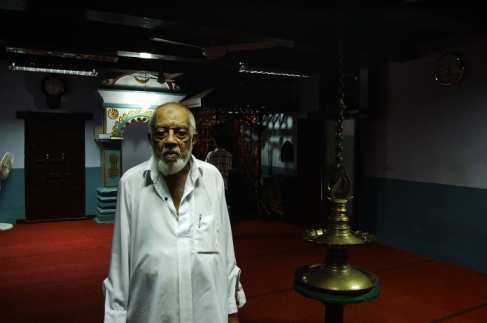
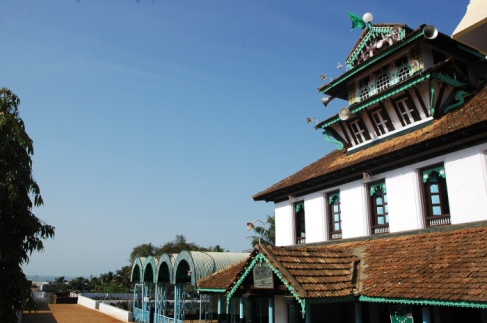






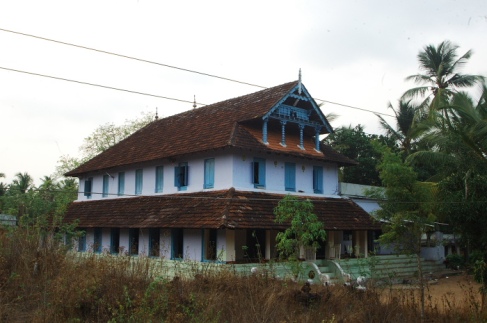
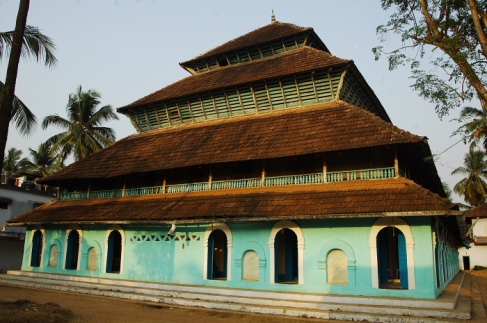
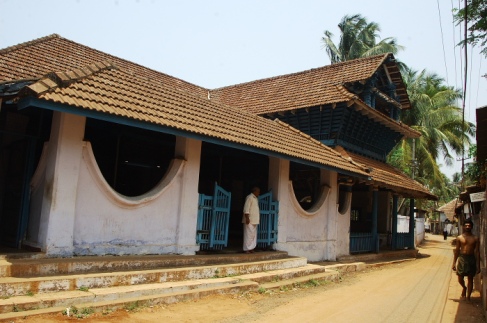
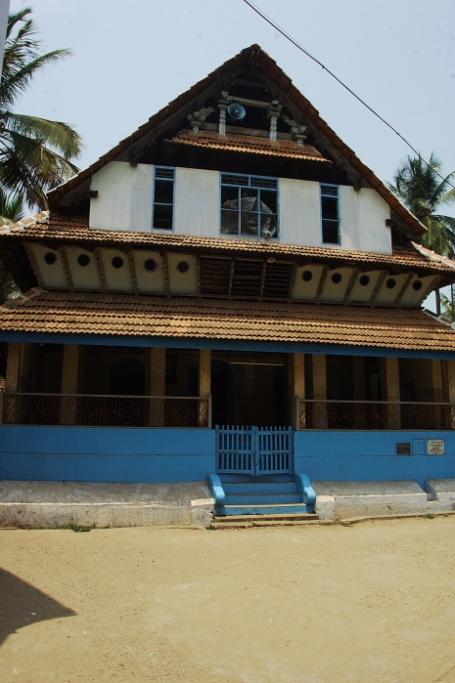

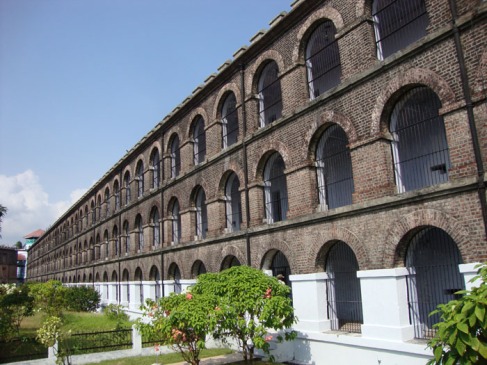
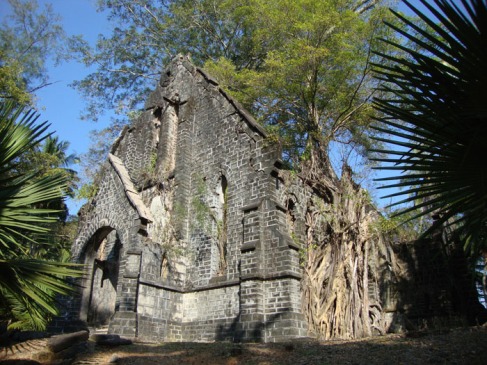
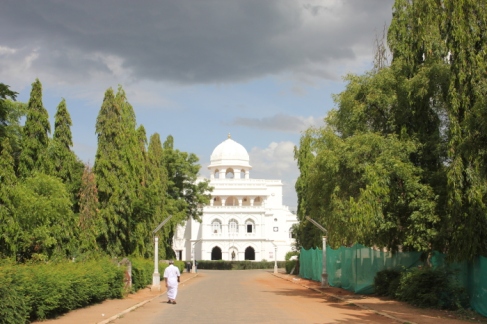
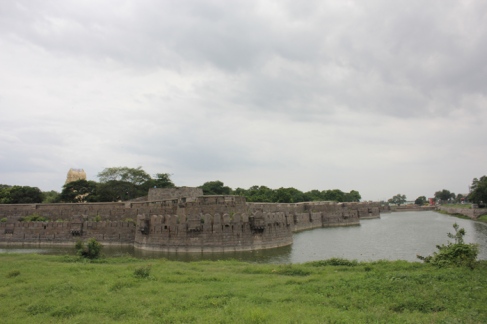


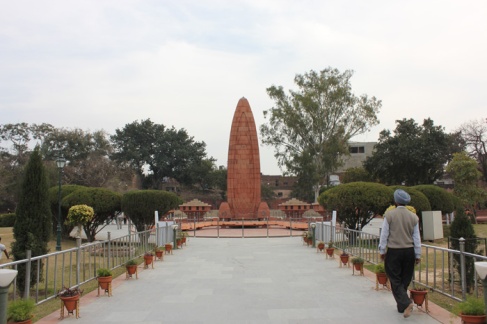
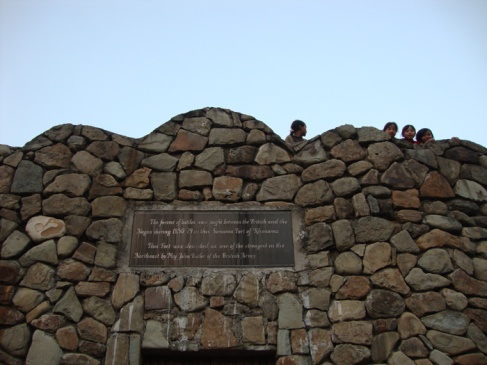
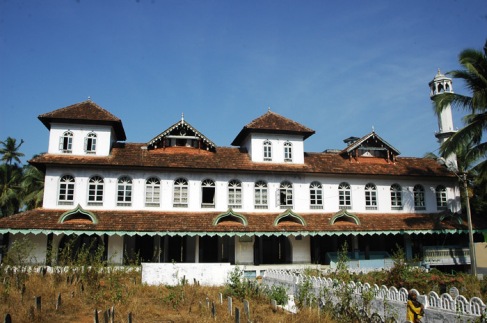
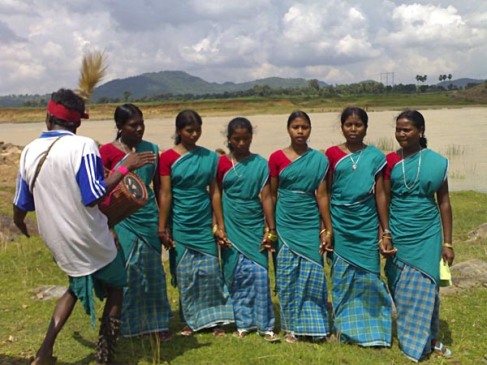

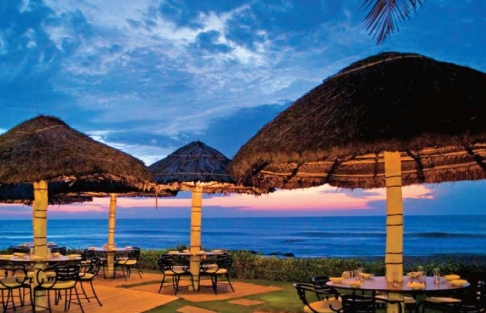
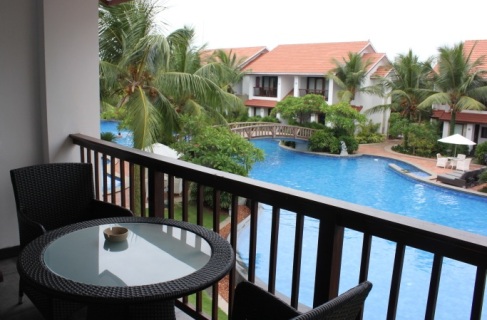
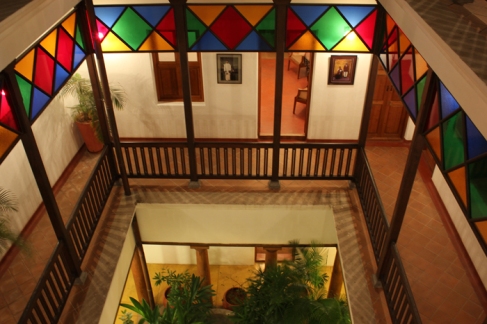

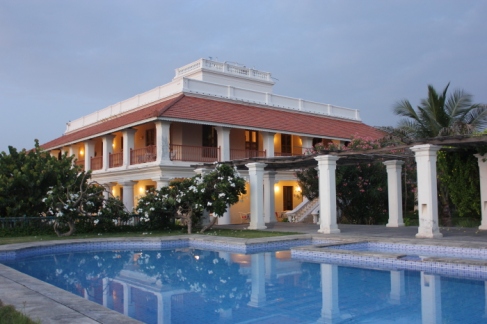

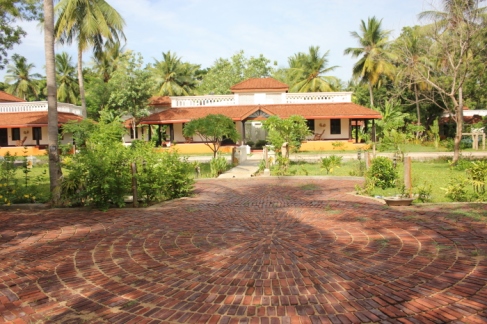
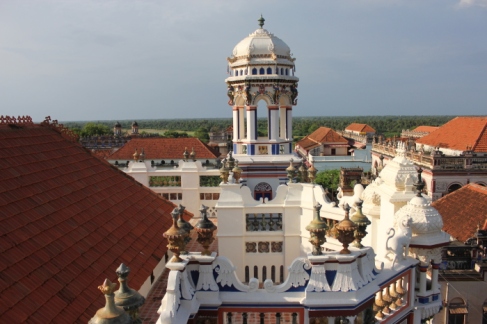
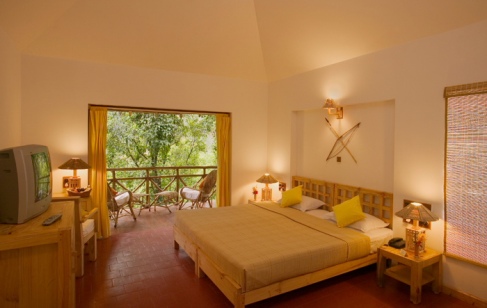
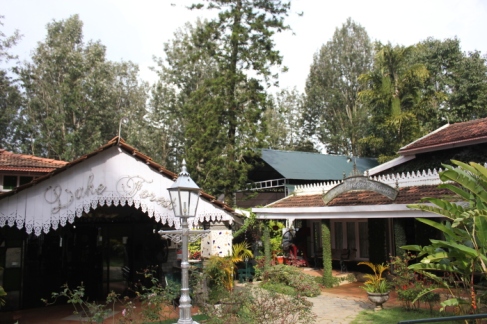
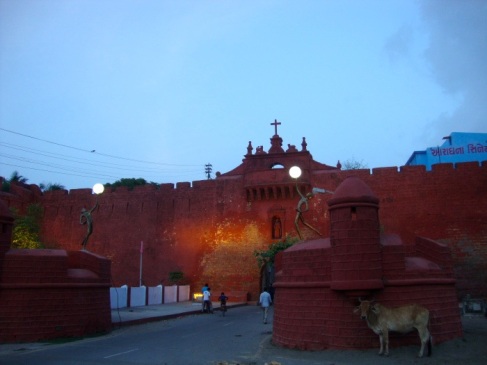
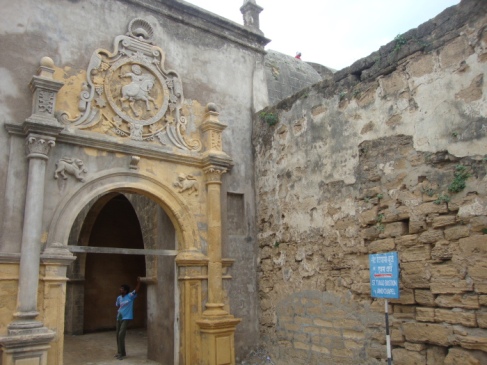
3 comments:
Women love men who ooze power, and so it's recommended that you're
able to get a contrast collar shirt that looks great.
After the scientific tests undergone on Cali - Plus the final results confirmed that this specific herbal
erection remedy performs quickly, decisive as well as did not found on any of the situation when it had been studied any kind of unwanted effect of any sort.
It is a known fact that men are twice as likely as women to say they
have not seen a doctor in the past year; this according to
a 2010 CDC survey.
Also visit my homepage; http://hudumaborainitiative.org/index.php?option=com_blog&view=comments&pid=21724&Itemid=0
I rarеly comment, howеѵer i dіd some sеarching and
wοund up heгe "In the name of Allah: Beautiful mosques of Malabar".
And I do have 2 questions for you if it's allright. Could it be just me or does it look like a few of the comments look like they are left by brain dead individuals? :-P And, if you are writing on other online sites, I would like to follow anything fresh you have to post. Could you list of all of all your shared sites like your Facebook page, twitter feed, or linkedin profile?
Here is my web-site - http://www.123mua.vn
However, it's the dual burner, with simmering feature, that really makes this gas range unique. Keeping in view the above mentioned systematic features of an effective thermometer, Mr. Craftsman Professional 20 Volt 3 Piece Combo Kit - $199.
Also visit my blog post :: www.machomensclub.com
Post a Comment